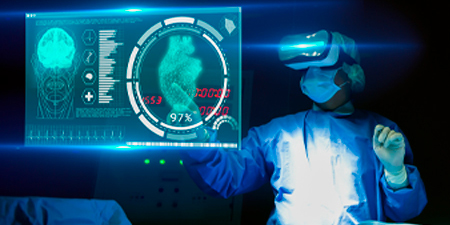During the 2020 Avicenna Day, many experts from all over the world talking about the need for Good Simulation Practice, a term coined by the Avicenna Alliance taking inspiration from the Good Clinical Practice typical of the clinical world to bring similar rules to Modeling & Simulation applied to the Pharmaceutical and Medical Devices industries.
Good Simulation Practice is progressively becoming a buzz word in the international scientific community while this concept could still lead to different interpretations; but where do we stand on creating and spreading GSP?
Let’s ask Luca Emili, Leader of the Good Simulation Practice Task Force at the Avicenna Alliance and CEO of InSilicoTrials: “This initiative was born to ensure that the results of computer modeling and simulation (CM&S) would be universally accepted as is the case of clinical trials. There is a strong need today – a requirement that also emerged from various researches – to have clearly defined rules and accepted regulations, since there is no document similar to that of Good Clinical Practice in the field of digital simulation. Our first goal is to raise awareness and start defining the context of use (COU) or how simulation can be used here. Essentially, Modeling & Simulation aims to Reduce, Refine and (in some cases) Replace (3Rs) in vitro and in vivo (animal and human) experiments”.
It is essential that GSP is supported by international regulatory agencies: “FDA already showed a great interest in this project and they were planning an event called ‘Towards Good Simulation Practices’, that should represent a key milestone for future activities on this topic”, continues Emili. “Ideally the next step would be to have the document elaborated and approved by ICH, International Council for Harmonization of Technical Requirements for Pharmaceuticals for Human Use (www.ich.org) which operates in the Healthcare field; ICH is the generator of Good Clinical Practice and gathers FDA, EMA and other relevant regulatory agencies and associations. At the Avicenna Alliance we came up with the name ‘Good Simulation Practice’ and, in the last years, we highlighted the need to create a standard that would help the simulation world in an important way: showing what can be done and how it should be done. We spread this idea in the scientific world and we appreciate the popularity this concept has gained. But now it is important that we all make progress in defining and adopting GSP as fast as possible”.
Marco Viceconti (Full Professor of Computational Biomechanics in the Department of Industrial Engineering of the Alma Mater Studiorum – University of Bologna, and Director of the Medical Technology Lab of the Rizzoli Orthopaedic Institute) is one of the key figures in the in silico medicine international community. When asked about the importance of GSP for scientific research, Prof Viceconti explained: “GSP is going to play an essential role soon. In the coming years, scientific research on in silico medicine must become less and less speculative, and increasingly translational, that is to say, immediately applicable and useful for clinical and industrial applications. This is only possible if researchers in laboratories and universities also start developing their models following good simulation practices”.
The need to define simulation standards for in silico medicine is highlighted, along with some obstacles to overcome: “The standards of good practice must be informed by technical competence of the specific sector”, continues Prof. Viceconti. “Good Laboratory Practices are full of knowledge about how a biological laboratory works, just as Good Clinical Practice is based on a deep knowledge of clinical trials. Similarly, a GSP standard must be based on a deep knowledge of all aspects, including technical ones, of computer simulation. The problem is that in silico medicine is a totally new industry and hardly anyone who works in the medical sector has been trained in it. There are still relatively few experts in the world, largely among those who first developed these methods. It is therefore essential that the standardization agencies that will work on the compilation of the GSP expand the range of experts involved to include these specialists as well. In this sense, I hope that the VPH Institute, which represents the experts working in the academic world, and the Avicenna Alliance, which coordinates those who work in the industry and VPHi, will have a central role in the composition of the panels of experts summoned to draft GSP”.
The Avicenna Alliance GSP Task Force is expected to produce a “Green Paper on future Good Simulation Practice standard” (green papers are preparatory documents aimed to stimulate discussion around a policy, published before the policy-making activity starts). The In Silico World Community of Practice will provide a grass-root, all-inclusive initiative that feeds the GSP Task Force with draft documents of high technical content, that might provide non-exclusive basis for the Task Force discussion. This discussion group is open to every expert willing to bring their own perspective in this preparatory debate.
